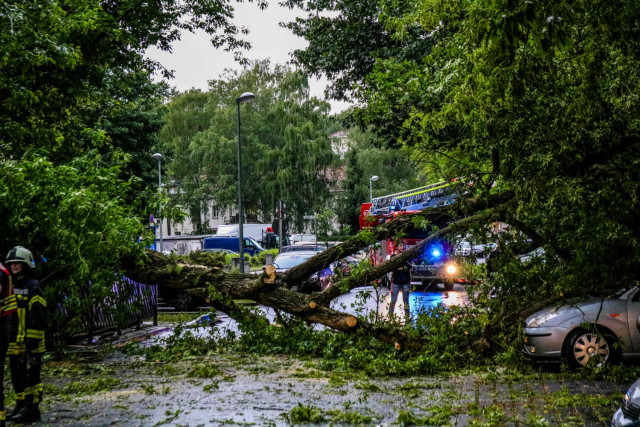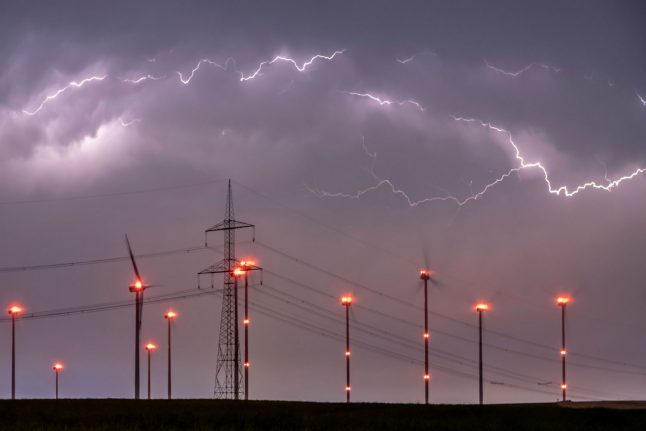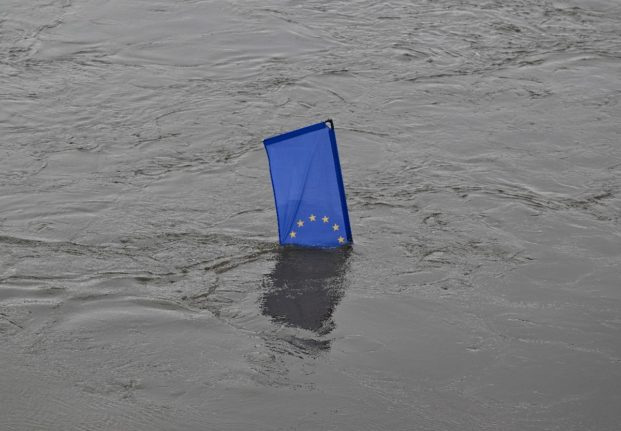There is a high chance of stormy weather in the eastern and southern Germany on Thursday. According to the German Weather Service (DWD) a number of storms threaten to hit these regions, particularly in the afternoon.
Nationwide top temperatures will hit 30 degrees C, especially along the Oder river.
Wednesday already saw a number of storms across Germany. In some areas, particularly in Lower Saxony and Hesse, up to 40 litres of rain per metre squared fell within an hour. Storm squalls of around 100km were measured throughout the hour.

Storms in Brandenburg a week ago knocked a tree into the road. Photo: DPA.
“Localized showers and thunderstorms poured down in stormy areas,” said DWD meteorologist Robert Hausen.
In some parts of Uslar, Lower Saxony, the police reported flooded streets. The pressure from the rain pushed manhole covers out of place, causing the flooding.
The nearby town of Einbeck was also affected when mud and water flooded streets making them impassable. In Hardegsen, a fallen overheard cable caused disruption as a large area of the town was closed off to the public.
According to experts, it will be muggy in the South over the weekend, which could lead to further storms.
Hot days lie ahead for the beginning of the coming weekend. In isolated cases the temperature could reach 40 degrees C, Hausen said. However it is too early for a reliable prediction.
The DWD mapped out which areas of Germany would be the most affected by storms.
Aktuell und in den kommenden Stunden muss mit kräftigen Schauern und #Gewittern gerechnet werden. In Bayern und Baden-Württemberg bereits erste #Unwetterwarnungen.
Stets aktuelle Informationen zur Warnlage:https://t.co/iGVPl8CqXY…/warnungen_gemeind…/warnWetter_node.html /V pic.twitter.com/AxceEHgXhP
— DWD (@DWD_presse) June 20, 2019




 Please whitelist us to continue reading.
Please whitelist us to continue reading.
Member comments